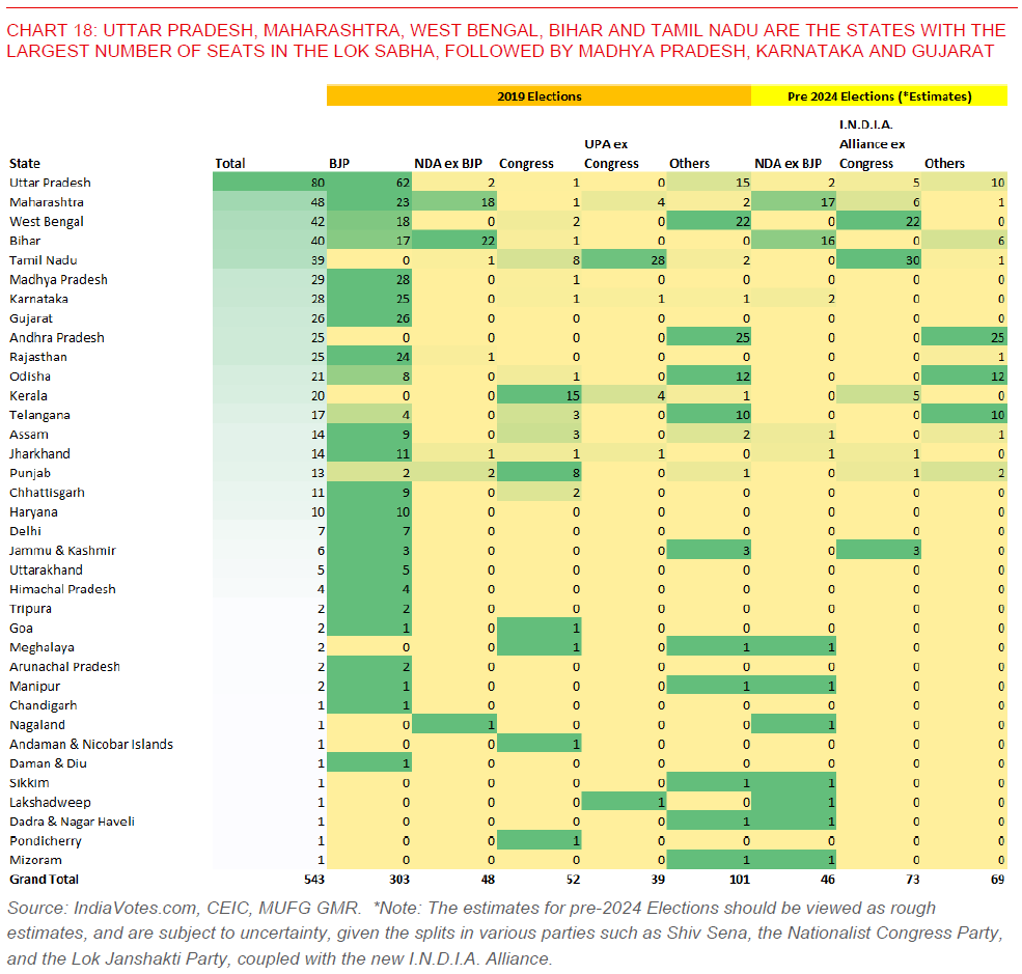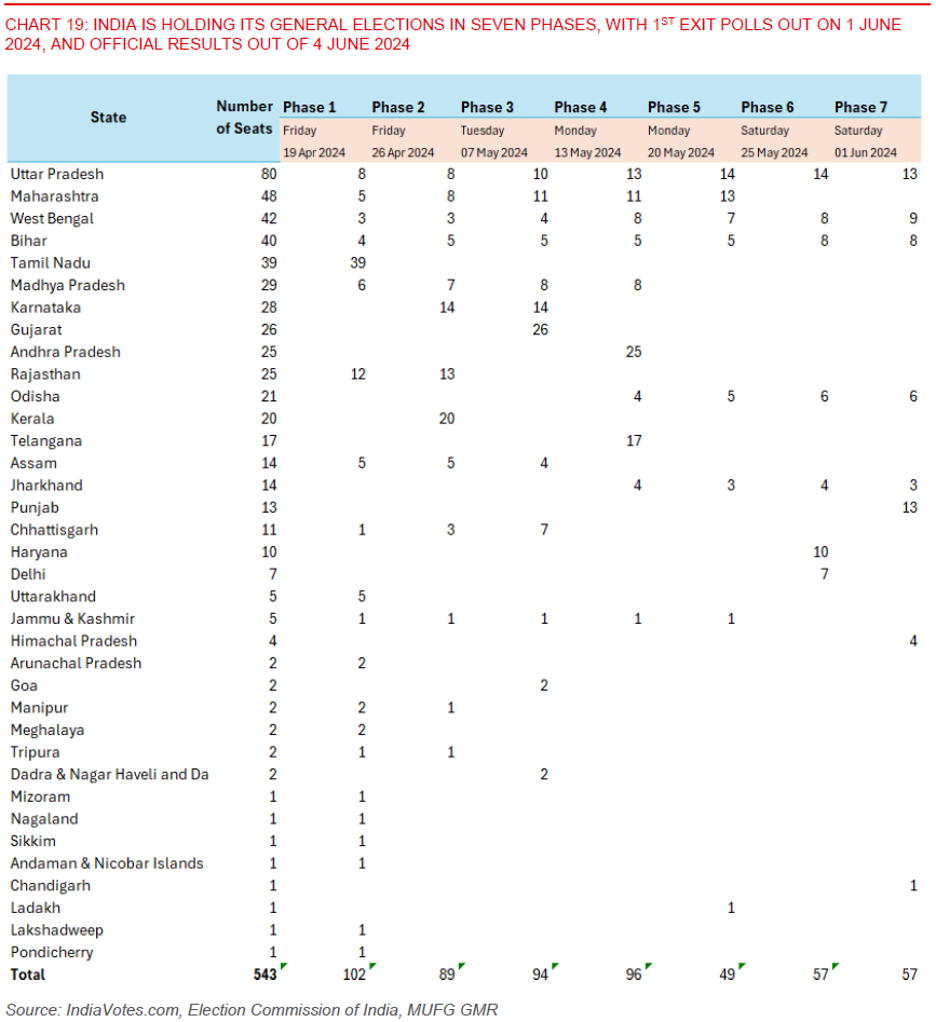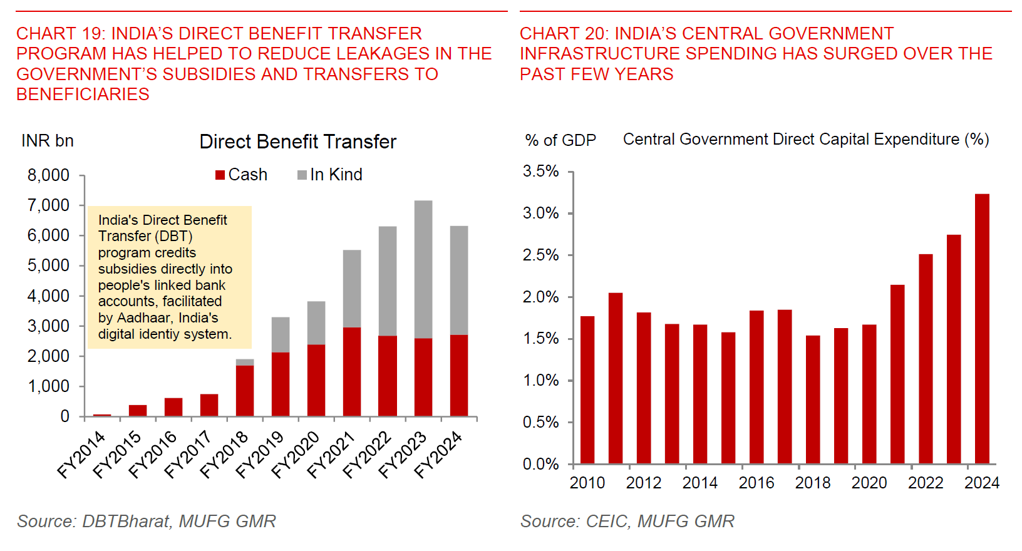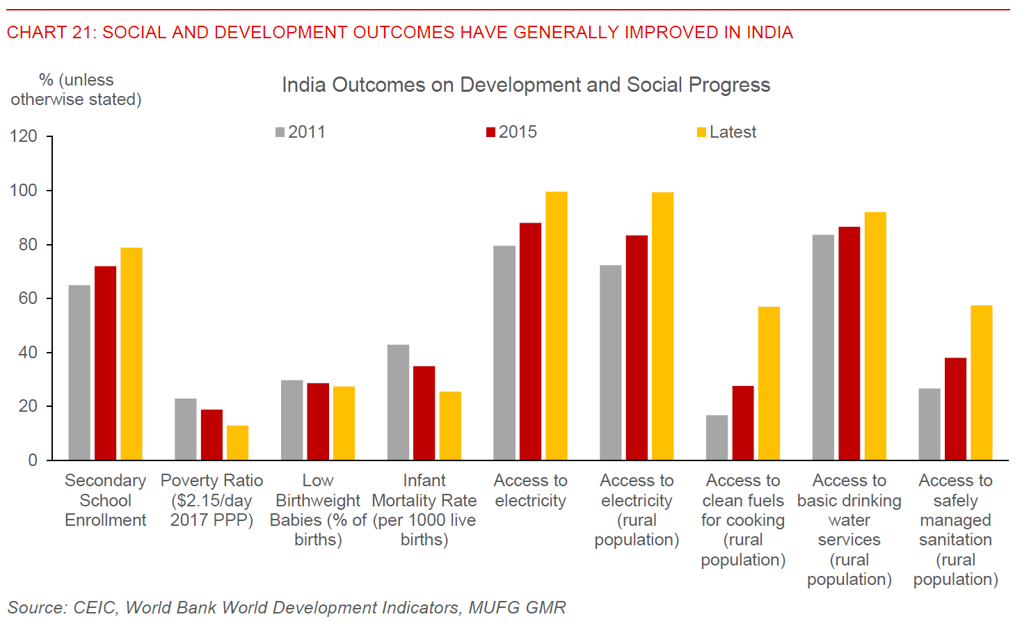India is holding its 2024 General Elections in phases now. Heading into the event, it almost seemed like it was a “done deal”, with the overwhelming consensus by political observers and polls agreeing on a likely strong win by the incumbent BJP government. However, lower voter turnout in the first 3 phases of the elections have increased perceived uncertainty on the outcome, even if the consensus is still firmly rooting for a return of the incumbent.
As long as BJP wins a majority of seats in the Lok Sabha again (>272 seats), we think markets should still view the outcome of India’s General Elections positively over time. There could be modest knee-jerk weakness in INR FX and risk assets if BJP loses some seats and maintains a majority. However, we think this weakness should reverse over time as there will still be policy continuity in crucial areas such as infrastructure, investment attraction, fiscal consolidation, and inflation management in such a scenario. Conversely, a greater seat share win by the BJP compared with 2019 (>303 seats) would increase the ability to pass more contentious structural reforms in land, labour and the agriculture sector, and will be perceived much more positively by markets, with INR FX and risk assets likely rallying in the aftermath.
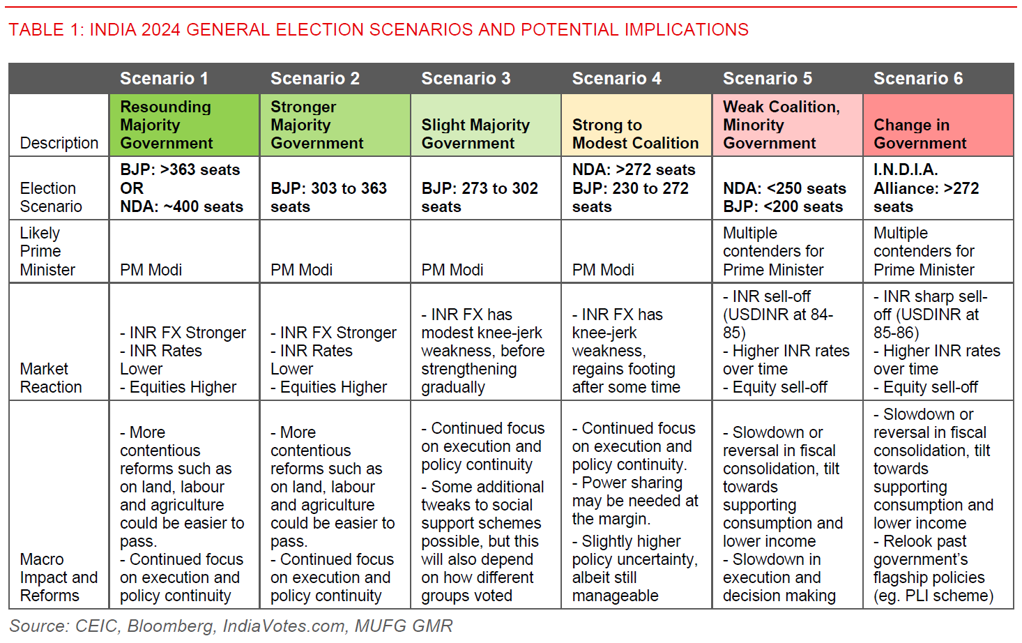
Sustained volatility in INR markets and more meaningful policy changes could come if there is a weak coalition, and/or a change in the government. There are of course many shades of grey here, but scenarios requiring significant support from coalition partners and outside parties and/or a change in government will likely be perceived most negatively by markets (see Scenarios 5 and 6 in the Table above). There could be a slowdown in fiscal consolidation, more support for consumption spending, slower public infrastructure execution, together with a relook at incentives to attract manufacturing, all of which could combine to increase policy uncertainty. If history is any guide, we think INR could sell-off by 1-3%, equities could decline meaningfully, while INR rates could grind higher in such outcomes. The probability is very low, but it’s still worth being cognisant of tail risks as always.
Some things will not change for India: While market sentiment will no doubt take a sharp hit in the event of a change in government or a weak coalition, it’s important to remind ourselves that there are many good things going for India that are independent of the government of the day. These include good demographics, an educated population segment, a large domestic market, the cumulative impact of past reforms, coupled with global push factors such as supply chain diversification and the surge in digitalisation. This is not to say that policy shifts will not have an impact, but it’s certainly to say that we should not swing too far in either direction in longer-term assessments.
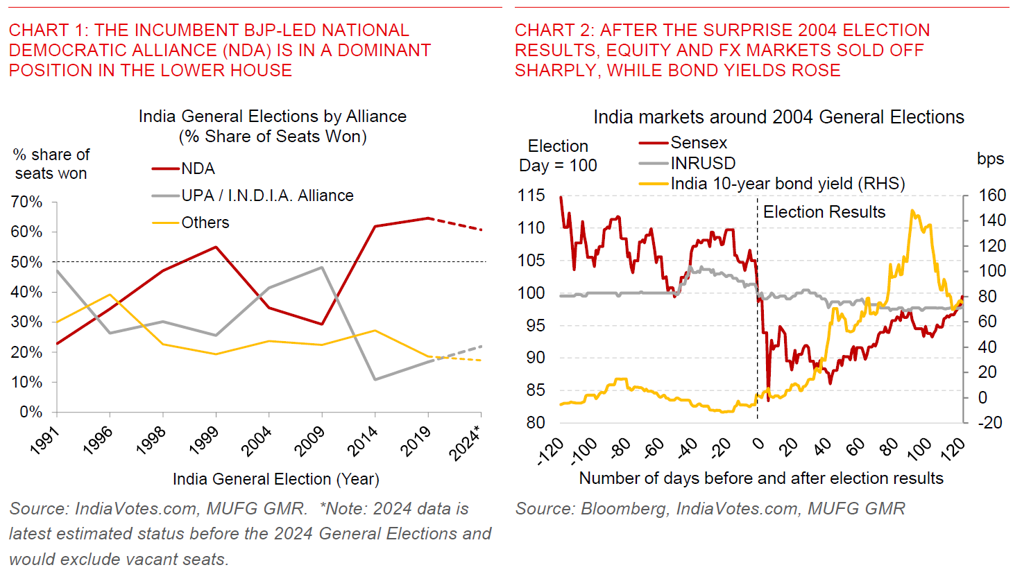
Great expectations for the incumbent BJP leading up to India’s Lok Sabha Elections in 2024
India is going to the polls from 19 April to 1 June as we speak. The 2024 General Elections is held in seven phases and will seek to elect 543 members of the Lok Sabha (lower house of parliament). Thus far, three phases have already been concluded with four more phases to be conducted over the next 3 weeks. The 1st exit polls will be out on 1 June from around 6pm Indian Standard Time (IST), providing an initial glimpse into the outcome. The official results will be out thereafter on 4 June.
Surveys leading up to the Elections showed the BJP (Prime Minister Modi’s party) together with the National Democratic Alliance (NDA) increasing their seats from ~350 in the 2019 Elections to slightly under 400 this year (see Chart 3 below). This was especially so from January 2024, perhaps in part due to a perceived lack of cohesion in the newly formed opposition alliance, the Indian National Developmental Inclusive Alliance (I.N.D.I.A.).
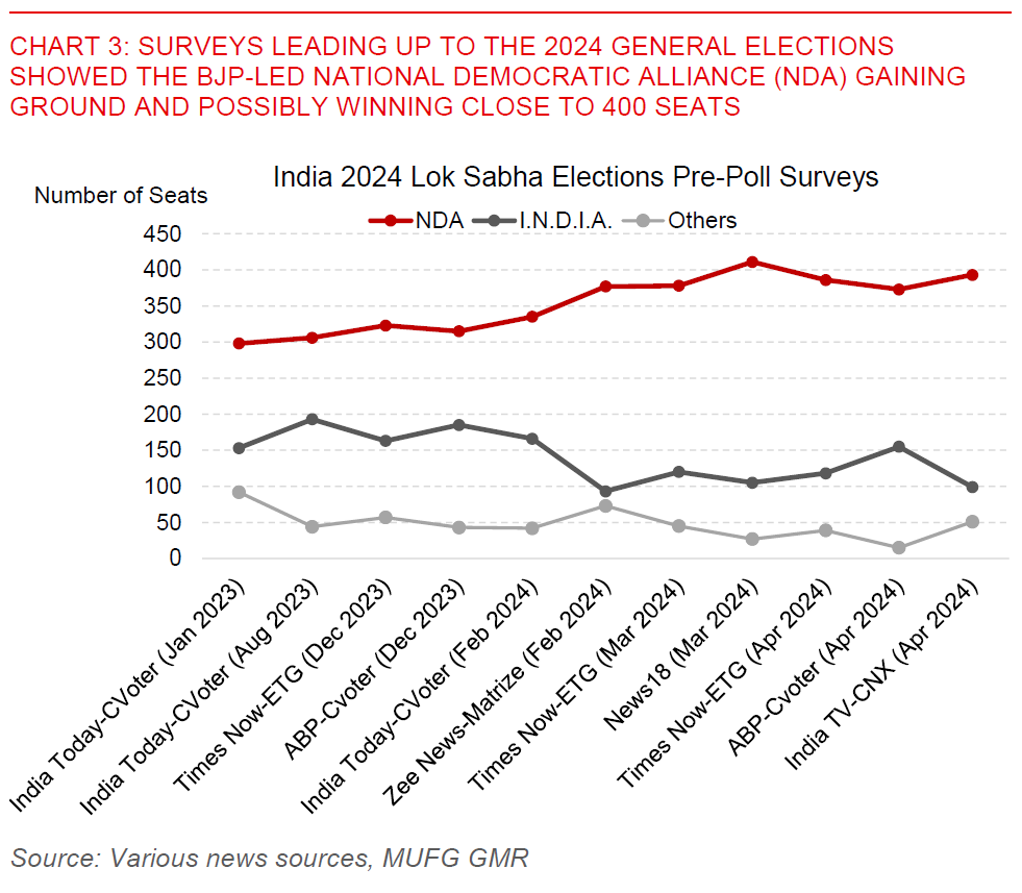

The link between lower voter turnout and anti-incumbency is not clear
Nonetheless, as the elections started and progressed from 19 April, there were some concerns around the dip in voter turnout in the 1st 3 phases. On average, nationwide voter turnout looks to have dropped by around 3-4 percentage points from 2019, while in general most states also showed a drop in voter turnouts (see Charts 4 and 5 above). Common explanations for lower voter turnout by political commentators centered around the heatwave across India, together with possible voter apathy.
This development has led to some modest jitters among market participants that lower voter turnout may be a harbinger of anti-incumbency and could work against the BJP’s favour this year. Nonetheless, the most robust academic literature generally points to no clear relationship between overall voter turnout and anti-incumbency in India’s Elections historically (for instance, see Carnegie Endowment – Is Higher Turnout Bad for Incumbents?). Indeed, data since 1951 suggests that there were eight times an incumbent government lost, and this sample was equally split between increases and decreases in overall voter turnout rates (see Charts 6 and 7 below).
For now, we emphasise that it is very difficult to draw exact conclusions around the impact of lower voter turnout on the Election outcome. This will probably become clearer later with deeper analysis on which groups turned out to vote.
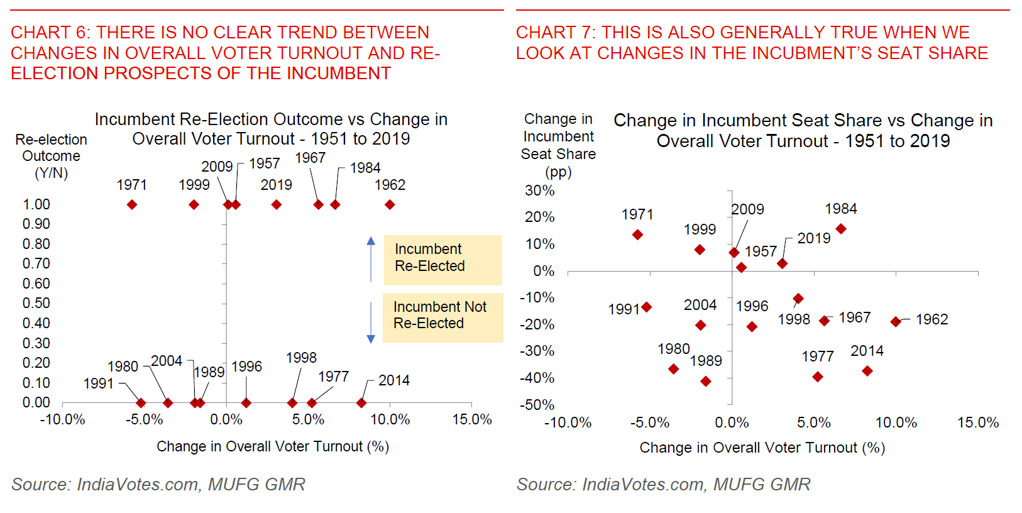
Short-term market impact depends on the strength of government mandate relative to expectations
If history is any guide, the short-term market impact of the Elections will depend on the strength of government mandate relative to polling expectations.
The classic example of an outsized market move was in the 2004 elections (see Chart 2 above). Back then, pre-election polls were predicting that the National Democratic Alliance (NDA) led by the BJP would be able to retain power, but with varying opinions on whether the seat tally would increase or decrease. The actual result was a complete surprise to markets, as the NDA lost and the UPA led by Congress formed the government with a modest coalition. The Sensex fell 17% in one day, INR was weaker against the Dollar by more than 2% over 3 months, while India 10-year bond yields rose by 150bps at one point as markets built in higher fiscal spending (see Chart 2 above and Charts 9 to 15 below).
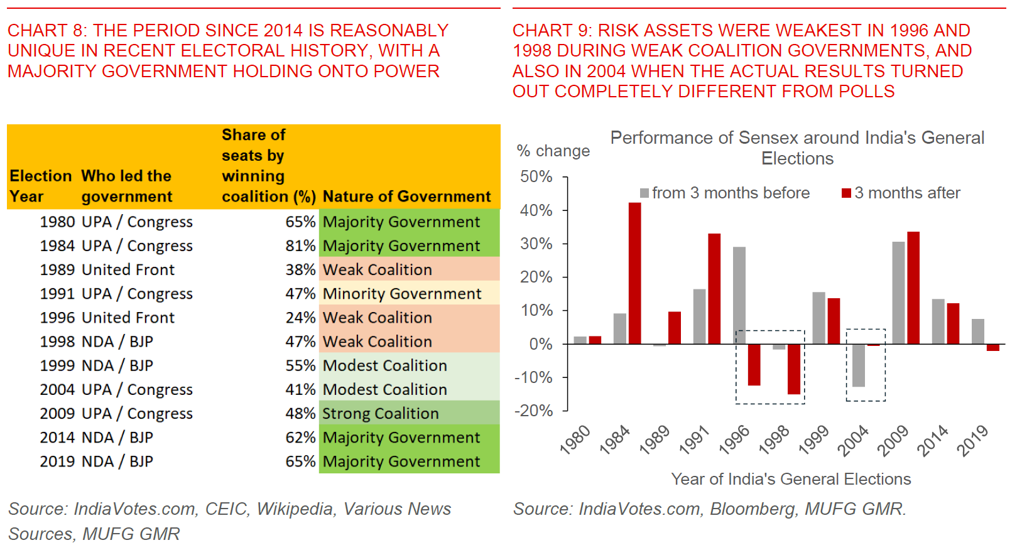
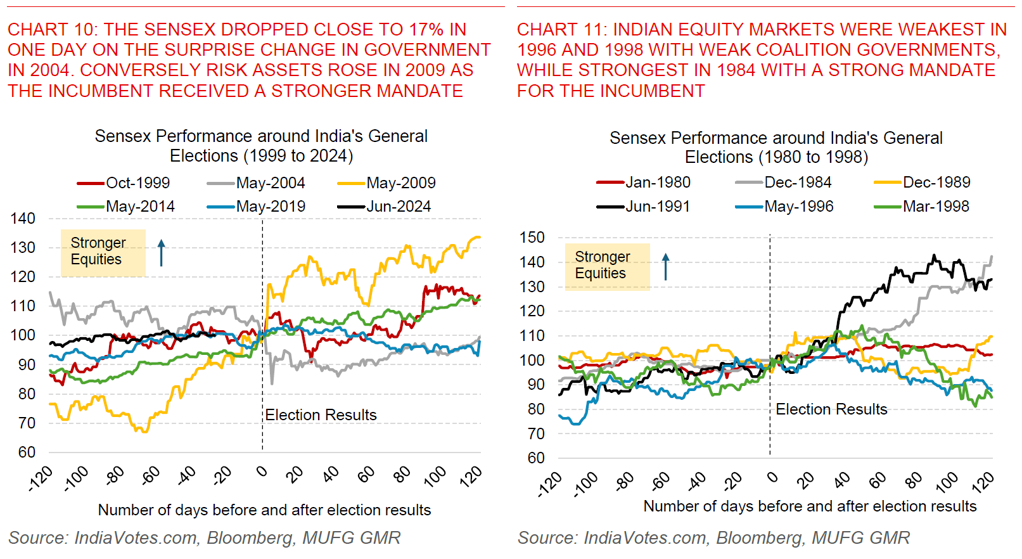
Conversely, the polls leading up to the 2009 Elections underestimated the extent of UPA/Congress’ win, leading to a surge in risk assets and INR. Most polls leading up to the 2009 Elections were expecting the UPA (led by Congress) to win but to get less than 200 seats. UPA however eventually managed to get a much stronger mandate than expected with >260 seats. This led to the Sensex rising by more than 10%, INR to strengthen by more than 2%, with a gradual grind higher in India 10-year bond yields. Ultimately, it’s important to note that opinion polls in India are not always accurate historically, and partly reflects the challenge of a first-past-the-post electoral system where modest shifts in vote sentiment can lead to meaningful changes in seat shares (see Praveen Rai 2014 – Fallibility of Opinion Polls in India).
Looking further back in history, we saw outsized market moves in 1984 after a strong mandate by the incumbent government, together with some weakness in risk assets during the 1996-1998 elections with weak coalitions voted into power.
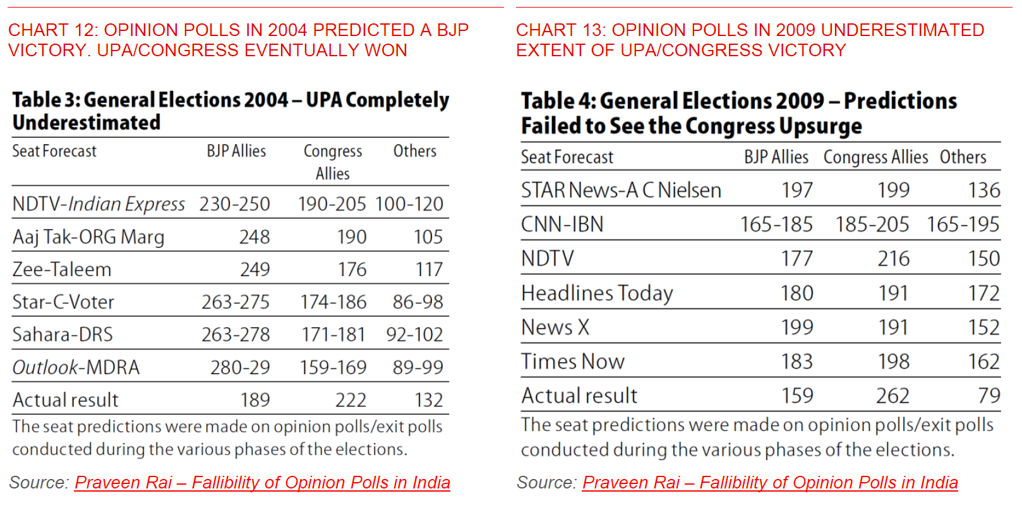
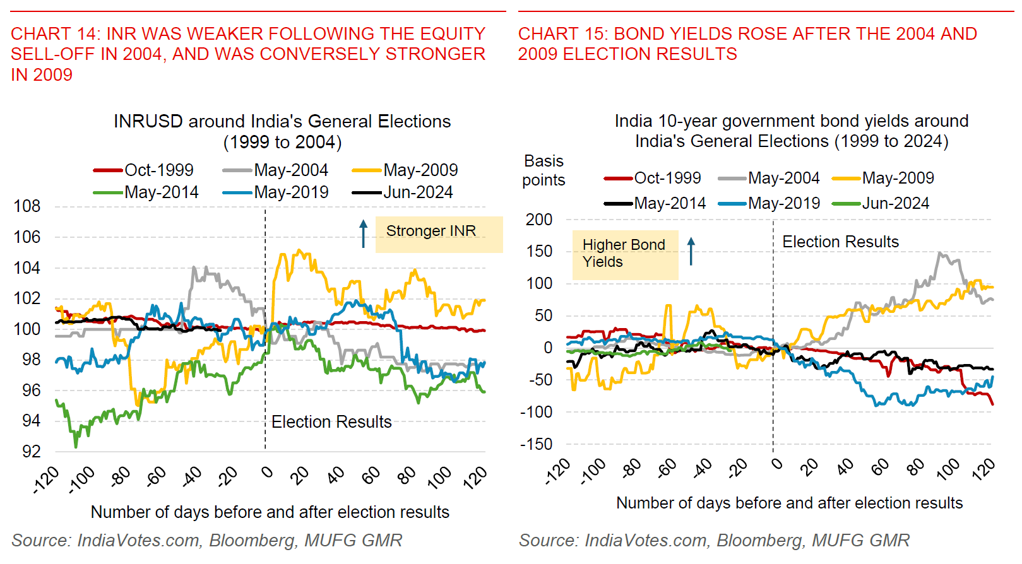
The macro impact – what’s at stake for India’s structural prospects and reforms in these Elections
Election outcome could affect pace of structural reforms in India: Looking beyond market gyrations now at macro, we have long been positive on India’s structural prospects due in part to the cumulative impact of reforms taken by the current government. These policy measures include the introduction of the Goods and Services Tax, which has helped to increase formalisation in the economy and reduced internal trade barriers, coupled with the Direct Benefit Transfer program (introduced before 2014), which has improved targeting of government subsidies and transfers to beneficiaries (see Chart 16 below). Other key legislation and policies include the Insolvency and Bankruptcy Code, the Real Estate law, coupled with the acceleration of public infrastructure program which has helped reduce logistic costs over time.
While most election scenarios should see policy continuity over the medium-term (including a strong coalition led by NDA/BJP), a weak coalition and/or a change in government could bring about the greatest policy uncertainty. Historically, markets tend to perceive Congress’ policies as tilting towards more fiscal expansion, rightly or wrongly. For example, bond yields generally rose post the 2004 and 2009 Election win by UPA/Congress. In addition, if the Election manifestos by Congress are anything to go by, we will likely see more government spending to support consumption and the lower incomes, which could lead to some reversal in fiscal consolidation over time in the event of a change in government.
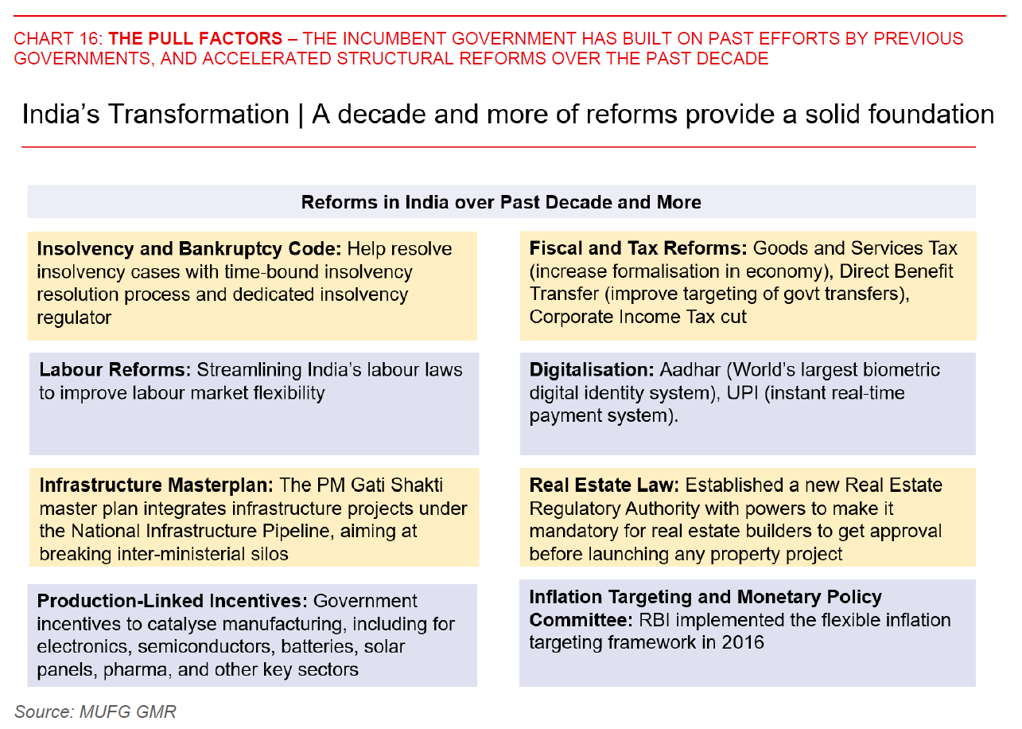
On the flipside, more difficult and contentious structural reforms could be passed if the BJP/NDA gets a larger seat share: These contentious policies include the implementation of less restrictive labour codes at the state level, reforming the farm and agriculture sector, together with changing land ownership regulations. The process of legislation in India is ultimately still a consensus one, given that approval in the Upper House of Parliament (Rajya Sabha) is still needed on most with the exception of the Union Budget. Nonetheless, a stronger mandate for the BJP/NDA would certainly increase the chance of these difficult reforms happening in our view.
Some things will not change for India: While market sentiment will no doubt take a sharp hit in the event of a change in government or a weak coalition, it’s important to remind ourselves that there are many good things going for India that are independent of the government of the day. These includes good demographics, an educated population, a large domestic market, the cumulative impact of past structural reforms, coupled with global push factors such as supply chain diversification and the surge in digitalisation (see Chart 17 below). This is not to say that policy shifts will not have an impact, but it’s certainly to say that we should not swing too far in either direction in longer-term assessments.
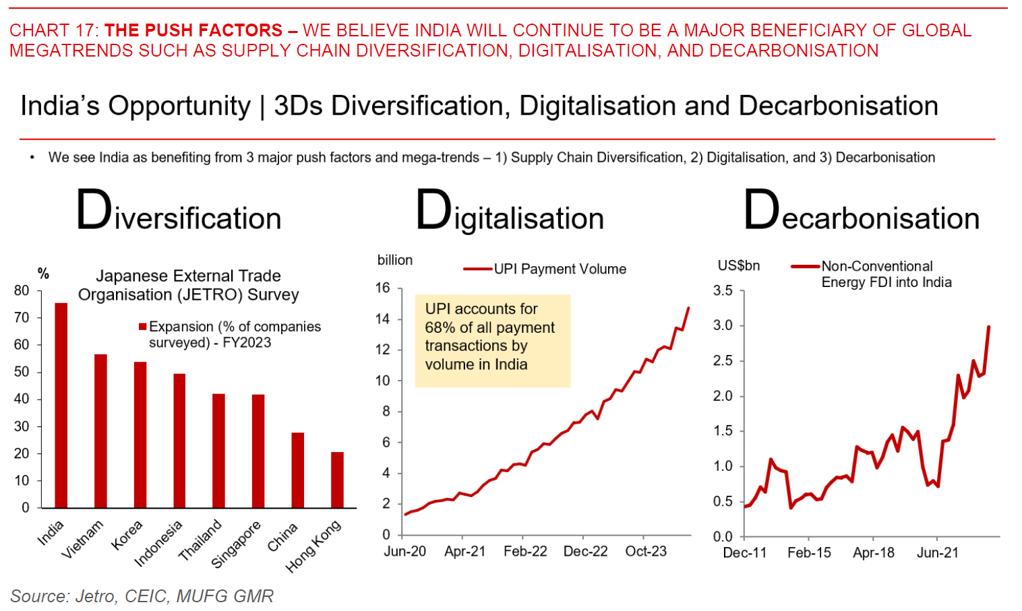
Appendix
